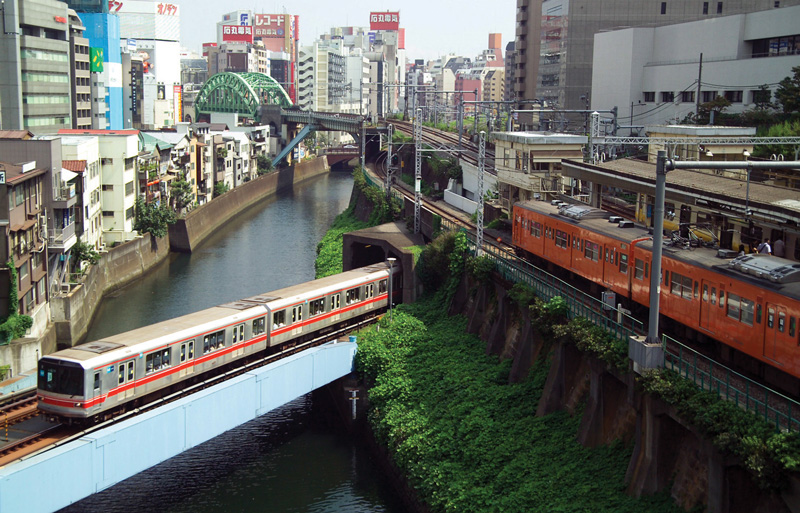បច្ចុប្បន្ននៅកម្ពុជាមានកំពង់ផែសរុបចំនួន១០៣ ដែលក្រសួងកំពុងផ្តោតលើការពង្រឹងសមត្ថភាពគ្រប់គ្រងរដ្ឋបាល
បច្ចុប្បន្ននៅកម្ពុជាមានកំពង់ផែសរុបចំនួន ១០៣ ដែលក្រសួងសាធារណការ និងដឹកជញ្ជូន បាននិងកំពុងរៀបចំឯកសារដែលមានភាពច្បាស់លាស់គ្រប់ជ្រុងជ្រោយសម្រាប់កំណត់តំបន់កំពង់ផែ តាមរយៈ“គម្រោងពង្រឹងសមត្ថភាពសម្រាប់ការគ្រប់គ្រងរដ្ឋបាលកំពង់ផែ”។ នេះបើតាមសិក្ខាសាលាពិគ្រោះយោបល់ ក្រោមអធិបតីភាពរបស់ ឯកឧត្តម ប៉េង ពោធិ៍នា រដ្ឋមន្រ្តីក្រសួងសាធារណការ និងដឹកជញ្ជូន, លោក NAGASE Kensuke ភារធារី និងជាតំណាងដ៏ខ្ពង់ខ្ពស់ ឯកឧត្តមអគ្គរាជទូតជប៉ុនប្រចាំ កម្ពុជា, លោក SANUI Kazumasa ប្រធានតំណាងទីភ្នាក់ងារអន្តរជាតិជប៉ុន JICA ប្រចាំកម្ពុជា, រួមជាមួយអ្នកពាក់ព័ន្ធជាច្រើនរូបទៀតផងដែរ។ សិក្ខាសាលានេះធ្វើឡើងក្នុងគោលបំណងដើម្បីបង្ហាញ ពិគ្រោះយោបល់ និងប្រមូលធាតុចូលបន្ថែមលើឯកសារនានាពាក់ព័ន្ធនឹងការរៀបចំកំណត់តំបន់កំពង់ផែ (PORT ZONING) ដើម្បីឱ្យឯកសារមានភាពច្បាស់លាស់គ្រប់ជ្រុងជ្រោយ ក្រោមគម្រោងពង្រឹងសមត្ថភាពសម្រាប់ការគ្រប់គ្រងរដ្ឋបាលកំពង់ផែក្នុងឆ្នាំ២០២៥។ ឯកឧត្តមរដ្ឋមន្ត្រីបានលើកឡើងថា ការប្រមូលមតិយោបល់ និងផ្តល់ធាតុចូលបន្ថែមសម្រាប់រៀបចំកែសម្រួលឯកសារដ៏មានសារៈសំខាន់នេះ គឺមានគោលបំណងសំដៅធានាដល់ការអនុវត្តប្រកបដោយប្រសិទ្ធភាព និងស្របតាមបរិបទជាក់ស្តែងរបស់កម្ពុជា។ គួរបញ្ជាក់ថា ក្នុងបរិបទនៃការអភិវឌ្ឍកំពង់ផែនៅក្នុងព្រះរាជាណាចក្រកម្ពុជា ប្រកបដោយតម្លាភាព ស័ក្តិសិទ្ធិភាព ចីរភាព និងនិរន្តរភាពនៅឆ្នាំ២០២៤-២០២៥ រាជរដ្ឋាភិបាលបានរៀបចំជាទម្រង់ផែនការរួមសម្រាប់ការអភិវឌ្ឍកំពង់ផែនៅតាមតំបន់សមុទ្រ ដែលបានកំណត់យកទស្សនវិស័យសម្រាប់អភិវឌ្ឍន៍កំពង់ផែសមុទ្រកម្ពុជា និងការរៀបចំគម្រោងអភិវឌ្ឍន៍ផែនការមេ ដើម្បីប្រែក្លាយកំពង់ផែក្រុងព្រះសីហនុ ទៅជាកំពង់ផែ និងមជ្ឈមណ្ឌលឡូជីស្ទីកថ្នាក់តំបន់។ ការអភិវឌ្ឍកំពង់ផែនៅតាមតំបន់ទន្លេ ដែលបានកំណត់នៅក្នុងឯកសារ ក្របខ័ណ្ឌនៃការអភិវឌ្ឍ […]
ក្រុមហ៊ុនអាកាសចរណ៍អេមីរ៉ាតអារ៉ាប់រួម ប្តេជ្ញាជំរុញការតភ្ជាប់ផ្លូវហោះហើរត្រង់ជាមួយកម្ពុជាបន្ថែមទៀត
ក្រុមហ៊ុនអាកាសចរណ៍ Emirates Airline នៃប្រទេសអេមីរ៉ាតអារ៉ាប់រួម បានប្តេជ្ញាជួយជំរុញការតភ្ជាប់ផ្លូវហោះហើរជាមួយកម្ពុជាបន្ថែមទៀត ដើម្បីជំរុញវិស័យទេសចរណ៍ និងពាណិជ្ជកម្មឱ្យកាន់តែរីកចម្រើន។ ការប្តេជ្ញានេះ ត្រូវបានធ្វើឡើងចំពេលដែលយន្តហោះលើកដំបូងរបស់ក្រុមហ៊ុននេះ បានមកចុះចតនៅអាកាសយានដ្ឋានអន្តរជាតិសៀមរាបអង្គរ កាលពីថ្ងៃទី០៣ ខែមិថុនា ឆ្នាំ២០២៥។ នាឱកាសនោះ ឯកឧត្តម ម៉ៅ ហាវណ្ណាល់ រដ្ឋមន្ត្រីទទួលបន្ទុករដ្ឋលេខាធិការដ្ឋានអាកាសចរណ៍ស៊ីវិល បានបញ្ជាក់ថា ប្រទេសអេមីរ៉ាតអារ៉ាប់រួម កំពុងក្លាយជាទីផ្សារយុទ្ធសាស្ត្រដ៏សំខាន់មួយសម្រាប់ប្រទេសកម្ពុជា។ ដូច្នេះហើយការពង្រីកការហោះហើររបស់ក្រុមហ៊ុនអាកាសចរណ៍ Emirates នឹងជួយជំរុញកំណើនសេដ្ឋកិច្ចប្រទេសទាំងពីរ ពិសេសទឹកដីប្រវត្តិសាស្ត្រសៀមរាបអង្គរ។ ទន្ទឹមគ្នានេះ លោក Mohammed Al Qassim អ្នកគ្រប់គ្រងប្រចាំប្រទេសកម្ពុជារបស់ Emirates បានឱ្យដឹងថា Emirates បានប្ដេជ្ញាចិត្ត ក្នុងការចូលរួមគាំទ្រចក្ខុវិស័យរបស់កម្ពុជា តាមរយៈការផ្ដល់នូវការតភ្ជាប់ផ្លូវហោះហើរដ៏សំខាន់ទៅទីក្រុងឌូបៃ និងទៅទីកន្លែងផ្សេងៗទៀត ដើម្បីរួមចំណែកពង្រឹងវិស័យទេសចរណ៍ និងពាណិជ្ជកម្មរបស់កម្ពុជា។ លោកជឿថា សក្ដានុពលរបស់ខេត្តសៀមរាប និងទន្ទឹងរង់ចាំធ្វើការជាមួយដៃគូពាក់ព័ន្ធក្នុងស្រុក និងរាជរដ្ឋាភិបាលកម្ពុជា ដើម្បីផ្សព្វផ្សាយផ្លូវហោះហើរថ្មីនេះ ដល់អតិថិជនរបស់យើងនៅទូទាំងពិភពលោកឱ្យបានកាន់តែច្រើន។ គួរបញ្ជាក់ថា ក្រុមហ៊ុនអាកាសចរណ៍ Emirates ហោះហើរ ៣លើកក្នុងមួយសប្ដាហ៍ មកកាន់ខេត្តសៀមរាប ពោលគឺនៅថ្ងៃអង្គារ ថ្ងៃព្រហស្បតិ៍ និងថ្ងៃសៅរ៍ […]
ព្រះមហាក្សត្រខ្មែរ ជំរុញភាគីពាក់ព័ន្ធរួមកម្លំាងគ្នាគ្រប់គ្រងសំណល់ប្លាស្ទិក ដើម្បីការពារបរិស្ថាន
ព្រះករុណា ព្រះបាទសម្តេចព្រះបរមនាថ នរោត្តម សីហមុនី ព្រះមហាក្សត្រនៃកម្ពុជា បានជំរុញគ្រប់ភាគីពាក់ព័ន្ធទាំងអស់ រួមគ្នាគ្រប់គ្រងសំរាមប្លាស្ទិក ដើម្បីការពារភពផែនដីឱ្យមានភាពស្អាត និងបៃតង។ នេះបើយោងតាមពិធីទិវាបរិស្ថានជាតិ និងបរិស្ថានពិភពលោក ៥មិថុនា ក្រោមប្រធានបទ៖ «ប្រយុទ្ធប្រឆាំងការបំពុលដោយប្លាស្ទិក (Beat Plastic Pollution) »។ នាឱកាសនោះ ព្រះករុណាព្រះមហាក្សត្រ មានព្រះរាជបន្ទូលថា ប្រធានបទ “ប្រយុទ្ធប្រឆាំងការបំពុលដោយប្លាស្ទិក” សម្រាប់ទិវាបរិស្ថានឆ្នាំ២០២៥នេះ គឺជាការក្រើនរំឭក និងការអំពាវនាវមួយសម្រាប់យើងទាំងអស់គ្នាឱ្យរួមគ្នាធ្វើសកម្មភាពប្រកបដោយការទទួលខុសត្រូវខ្ពស់។ ការដោះស្រាយបញ្ហានេះមិនមែនជាការងាររបស់បុគ្គលណាម្នាក់ ឬស្ថាប័ន ណាមួយនោះទេ ហេតុនេះ សូមគ្រប់ភាគីពាក់ព័ន្ធទាំងអស់បន្តផ្តល់នូវកិច្ចសហការគាំទ្រគ្រប់រូបភាពជាមួយក្រសួងបរិស្ថាន ក្នុងគោលបំណងសម្រេចបាននូវបេសកកម្មរួមគ្នា គឺពិភពលោកមានភាពស្អាត ភាពបៃតង និងចីរភាព ស្របតាមទិសស្លោក-កម្ពុជាស្អាត ខ្មែរធ្វើបាន។ ក្រសួងបរិស្ថាន បានឱ្យដឹងថា បច្ចុប្បន្នផលិតផលប្លាស្ទិកជាង ៤០០លានតោន ត្រូវបានផលិតក្នុងមួយឆ្នាំៗ ប៉ុន្តែមានប្រមាណ ១២% ត្រូវបានដុតបំផ្លាញហើយប្រមាណ ៩% ប៉ុណ្ណោះត្រូវបានធ្វើការកែច្នៃឡើងវិញ។ ចំណែកដែលនៅសល់ គឺត្រូវបានបោះចោលនៅទីលានចាក់សំរាម ឬបញ្ចេញទៅក្នុងបរិស្ថាន រួមទាំងមហាសមុទ្រផងដែរ។ ប្រសិនបើគ្មានវិធានការប្រកបដោយ និរន្តភាពនោះទេ គេរំពឹងថា បរិមាណសំណល់ប្លាស្ទិក […]
ត្រឹមខែឧសភានេះ រដ្ឋសម្រេចការវាស់ដីធ្លីទូទាំងប្រទេសកម្ពុជាបានជាង ១៣លានក្បាលដី, សល់តែជាង៣១ម៉ឺនទៀតប៉ុណ្ណោះ!
បើគិតត្រឹមថ្ងៃទី២៥ ខែឧសភា ឆ្នាំ២០២៥ ការវាស់វែងដីធ្លីលក្ខណៈជាប្រព័ន្ធនៅទូទាំងប្រទេសកម្ពុជា សម្រេចបានជាង ១៣លានក្បាលដី លើក្បាលដីប៉ាន់ស្មានសរុបទូទាំងប្រទេសចំនួន ១៣.៦៥១.៩៦៣ក្បាលដី ។ នេះបើយោងតាមការប្រកាសរបស់ក្រសួងរៀបចំដែនដី នគរូបនីយកម្ម និងសំណង់ នៅថ្ងៃទី ៥ ខែមិថុនា ឆ្នាំ២០២៥។ ក្រសួងរៀបចំដែនដី បានឱ្យដឹងថា ការវាស់វែងចុះបញ្ជីដីរដ្ឋ ដីឯកជន និងការចេញវិញ្ញាបនបត្រសម្គាល់ម្ចាស់អចលនវត្ថុ តាមរយៈការចុះបញ្ជីដីធ្លីមានលក្ខណៈជាប្រព័ន្ធនៅទូទាំងប្រទេស សម្រេចលទ្ធផលនៃវាស់វែងបានចំនួន ១៣.៣៣៧.៥០៧ក្បាលដី លើក្បាលដីប៉ាន់ស្មានសរុបនៅទូទាំងប្រទេសចំនួន ១៣.៦៥១.៩៦៣ក្បាលដី។ ក្នុងនោះ ក្រសួងរៀបចំដែនដី បានចេញបណ្ណបានចំនួន ៨.៤៥៩.៦១៨បណ្ណ និងចែកបណ្ណបានចំនួន ៧.៨៤២.៥៨៧បណ្ណ ចំណែកបណ្ណចំនួន ២៣៥.៤៦០ទៀត ម្ចាស់កម្មសិទ្ធិមិនទាន់មកទទួលនៅឡើយ។ ជាងនេះទៅទៀត ក្រសួងក៏បានចេញបណ្ណជាប់ពន្ធប្រថាប់ត្រាទិញ-លក់ បានចំនួន ១៨៦.១៣២បណ្ណ និងបណ្ណជាប់ពន្ធសូន្យបានចំនួន ១៩៥.៤៤០បណ្ណផងដែរ។ ដោយឡែក ក្បាលដីចំនួន ៣១៤.៤៥៦ក្បាលដី ដែលនៅមិនទាន់បានវាស់វែងនោះ រំពឹងថានឹងត្រូវវាស់វែងបញ្ចប់ក្នុងពេលឆាប់ៗខាងមុខនេះ ។ បើតាមក្រសួងរៀបចំដែនដី នគរូបនីយកម្ម និងសំណង់ បានបញ្ជាក់បន្ថែមថា មកទល់ពេលនេះ មានខេត្តចំនួន១៣ហើយ ដែលបានបិទបញ្ចប់ការវាស់វែងដីធ្លីមានលក្ខណៈជាប្រព័ន្ធ ក្នុងនោះរួមមាន៖ […]
ក្រុមហ៊ុនចិនប្រកាសបោះទុនជាង ៦០លានដុល្លារ សង់សណ្ឋាគារផ្កាយ៥ នៅក្រុងបាវិត
នៅក្នុងការអភិវឌ្ឍន៍ដ៏សំខាន់មួយសម្រាប់សេដ្ឋកិច្ចក្នុងស្រុក ក្រុមហ៊ុន YUNYA Hotel Co., Ltd. ដែលជាក្រុមហ៊ុនចិនបានប្រកាសពីការវិនិយោគដ៏ធំមួយក្រោមទុនវិនិយោគជាង ៦០លានដុល្លារ ដើម្បីសាងសង់សណ្ឋាគារលំដាប់ផ្កាយ៥ ដ៏ប្រណិត ដែលមានទីតាំងស្ថិតនៅភូមិថាញ់ញ៉ាន ឃុំបាទី ក្នុងក្រុងបាវិត ខេត្តស្វាយរៀង។ បច្ចុប្បននេះ អាជ្ញាធរខេត្តបានចុះពិនិត្យទីតាំងគម្រោងនេះរួចរាល់ហើយ នេះជាសញ្ញានៃការចាប់ផ្តើមការបណ្តាក់ទុនដ៏ល្អសម្រាប់ខេត្តមួយនេះ។ ក្នុងដំណើរទស្សនកិច្ចនៅថ្ងៃទី១១ ខែមិថុនា ឆ្នាំ២០២៥ លោក សរ សុដានី អភិបាលរងខេត្តស្វាយរៀង បានជួបជាមួយលោក Shen LeiLei ជាម្ចាស់ភាគហ៊ុនមកពីខេត្តជើជាំង សាធារណរដ្ឋប្រជាមានិតចិន ដើម្បីពិភាក្សាអំពីវឌ្ឍនភាពនៃគម្រោងនេះ។ លោក សុដានី បានបង្ហាញសុទិដ្ឋិនិយមចំពោះសណ្ឋាគារដែលនឹងមានបន្ទប់ចំនួន ២៨០ វីឡាចំនួន ៧០ ភោជនីយដ្ឋាន ស្ទីម សូណា និងផ្សារទំនើប។ សណ្ឋាគារថ្មីនេះគ្រោងនឹងបង្កើតឱកាសការងារបានជាង ៥០០កន្លែង ដែលដើរតួនាទីយ៉ាងសំខាន់ក្នុងការលើកកម្ពស់ទេសភាពសេដ្ឋកិច្ចក្នុងតំបន់ និងលើកកម្ពស់ជីវភាពរស់នៅរបស់ប្រជាពលរដ្ឋក្នុងតំបន់។ ដោយសារទីក្រុងបាវិតបន្តរីកចម្រើនជាទិសដៅសំខាន់ ការវិនិយោគនេះ គឺជាជំហានដ៏សំខាន់មួយឆ្ពោះទៅរកការជំរុញទេសចរណ៍ និងការអភិវឌ្ឍន៍សេដ្ឋកិច្ចក្នុងខេត្តស្វាយរៀង។ សហគមន៍មូលដ្ឋាន និងអាជ្ញាធររំពឹងថាអត្ថប្រយោជន៍ដែលសណ្ឋាគារនឹងនាំមកនូវការបញ្ចប់ការសាងសង់ ដោយបន្តបង្កើតទីក្រុងបាវិតជាទីតាំងដ៏ទាក់ទាញសម្រាប់ភ្ញៀវទេសចរណ៍ និងអ្នកវិនិយោគដូចគ្នាបន្ថែមទៀត។ - […]
រដ្ឋស្នើ ៥ចំណុច ដើម្បីបង្កើនសុវត្ថិភាព និងសោភ័ណភាពផ្លូវល្បឿនលឿនភ្នំពេញ-ព្រះសីហនុ
គណៈកម្មាធិការគ្រប់គ្រងកិច្ចព្រមព្រៀងសម្បទានគម្រោងផ្លូវល្បឿនលឿនភ្នំពេញ-ព្រះសីហនុ ព្រមទាំងភាគីពាក់ព័ន្ធទាំងអស់ បានបើកកិច្ចពិភាក្សាលើសំណើសំខាន់ចំនួន៥ ដើម្បីលើកកម្ពស់សោភណ័ភាព និងពង្រឹងសុវត្ថិភាពចរាចរណ៍លើផ្លូវល្បឿនលឿនភ្នំពេញ-ព្រះសីហនុ។ កិច្ចពិភាក្សានេះ បានធ្វើឡើងនៅថ្ងៃទី២ ខែមិថុនា ឆ្នាំ២០២៥ ដោយមានការចូលរួមពីក្រសួងសាធារណការ និងដឹកជញ្ជូន ក្រសួងសេដ្ឋកិច្ច និងហិរញ្ញវត្ថុ សហប្រធានគណៈកម្មាធិការគ្រប់គ្រងកិច្ចព្រមព្រៀងសម្បទានគម្រោងផ្លូវល្បឿនលឿនភ្នំពេញ-ព្រះសីហនុ និងមន្រ្តីជំនាញពាក់ព័ន្ធជាច្រើនរូបផ្សេងទៀត។ ក្រសួងសាធារណការ បានឱ្យដឹងថា កិច្ចប្រជុំនេះ ធ្វើឡើងក្នុងគោលបំណងពិនិត្យពិភាក្សាលើសំណើចំនួន៥ រួមមាន៖ ១.សំណើរបស់តំណាងរាស្ត្រមណ្ឌលខេត្តព្រះសីហនុ ដើម្បីដាំដើមត្នោតតាមបណ្តោយផ្លូវល្បឿនលឿន ២.សំណើរបស់ក្រសួងដែនដី នគរូបនីយកម្ម និងសំណង់ ដើម្បីដាំដើមឈើសងខាងផ្លូវ ៣.សំណើរបស់ក្រសួងដែនដី នគរូបនីយកម្ម និងសំណង់ ក្នុងការយកទិន្នន័យនិយាមកានៃគម្រោង ផ្លូវល្បឿនលឿនភ្នំពេញ-ព្រះសីហនុ ៤.សំណើរបស់ក្រសួងទេសចរណ៍ ក្នុងការផ្សព្វផ្សាយអំពីគោលដៅទេសចរណ៍ និងព្រឹត្តិការណ៍នានានៅតាមស្ពានរំលងកាត់ទទឹងផ្លូវ និង ៥.សំណើរបស់អាជ្ញាធរមូលដ្ឋានខេត្តព្រះសីហនុ ឱ្យជួយសម្រួលរថយន្ត ម៉ូតូកង់៣ ដែលចតចាំដឹកអ្នកដំណើរនៅរង្វង់មូលច្រកចេញ-ចូល មានការកកស្ទះខ្លាំង។ អង្គប្រជុំ ក៏បានពិភាក្សាអំពីការពង្រឹងសុវត្ថិភាពចរាចរណ៍លើផ្លូវល្បឿនលឿន និងការកកស្ទះនៅច្រកកំពង់សីលា និងបញ្ហាពាក់ព័ន្ធផ្សេងៗទៀតផងដែរ។ ក្រោយបញ្ចប់កិច្ចពិភាក្សានេះ ភាគីពាក់ព័ន្ធ បានដាក់ចេញជាគោលការណ៍ណែនាំ និងសេចក្តីសម្រេច ដើម្បីមានមូលដ្ឋានជាក់លាក់ ដោះស្រាយ និងឆ្លើយតបសំណើពីស្ថាប័នពាក់ព័ន្ធឱ្យបានឆាប់បំផុត។ គួរបញ្ជាក់ថា គម្រោងផ្លូវល្បឿនលឿនភ្នំពេញ-ព្រះសីហនុ មានប្រវែង ១៨៧.០៥គីឡូម៉ែត្រ […]



 English
English







